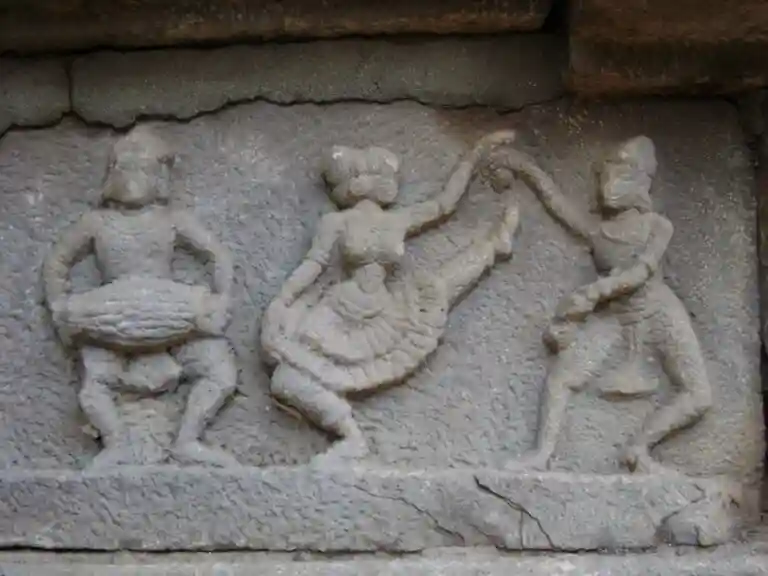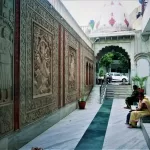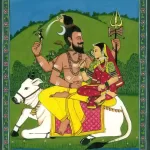Damsels of the Temple, The Vijayanagara Kingdom holds a significant place in Indian history due to its remarkable contributions to the development of society, arts, culture, and history, particularly in promoting the Hindu faith. It was one of the most powerful dynasties in southern India and played a crucial role in halting the expansion of Muslim invasions.
ALSO READ: Yogmaya Temple Mehrauli’s Sacred Gem
The Vijayanagara Empire, renowned as the most powerful kingdom in southern India, was aptly termed the “Golden Age of Arts.” During this period, various art forms, including dance, painting, sculpture, and literature, flourished under royal patronage. The empire not only supported these arts but also profoundly shaped their evolution, fostering innovative creative endeavors.
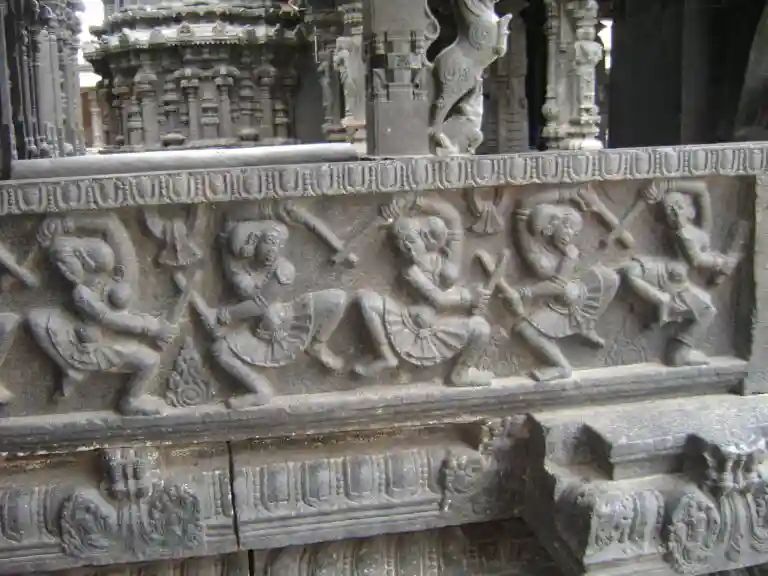
In literature, the emergence of Prabandha literature introduced fresh ideas and perspectives to the literary and artistic worlds. Temple architecture also saw significant advancements, with the introduction of Kalyana Mantapas and Raya Gopurams, which transformed the aesthetics of temple construction.
The Role of Damsels of the Temple
The murals adorning the inner roofs of temples, created using vegetable dyes, highlight the artistic creativity infused into painting during the Vijayanagara era. Dance, however, presents an even more captivating aspect. It was not merely an independent art form but also deeply intertwined with other disciplines such as literature, sculpture, music, and painting, serving as a subject, allegory, or theme. Beyond its artistic value, dance held a profound cultural significance, permeating every facet of society and reflecting its essence in multifaceted ways.
Dance, an integral part of society, found its true essence within the temple, the primary center of learning and spirituality. In the Vijayanagara Empire, temples served multifaceted roles. Beyond being places of worship, they symbolized the triumph of Hinduism across southern India. These temples were constructed to commemorate victories in campaigns, to promote the art of sculpture, and, most importantly, to act as community hubs. They provided a space where people from diverse social backgrounds could gather, interact, and take part in celebrations and significant cultural events.
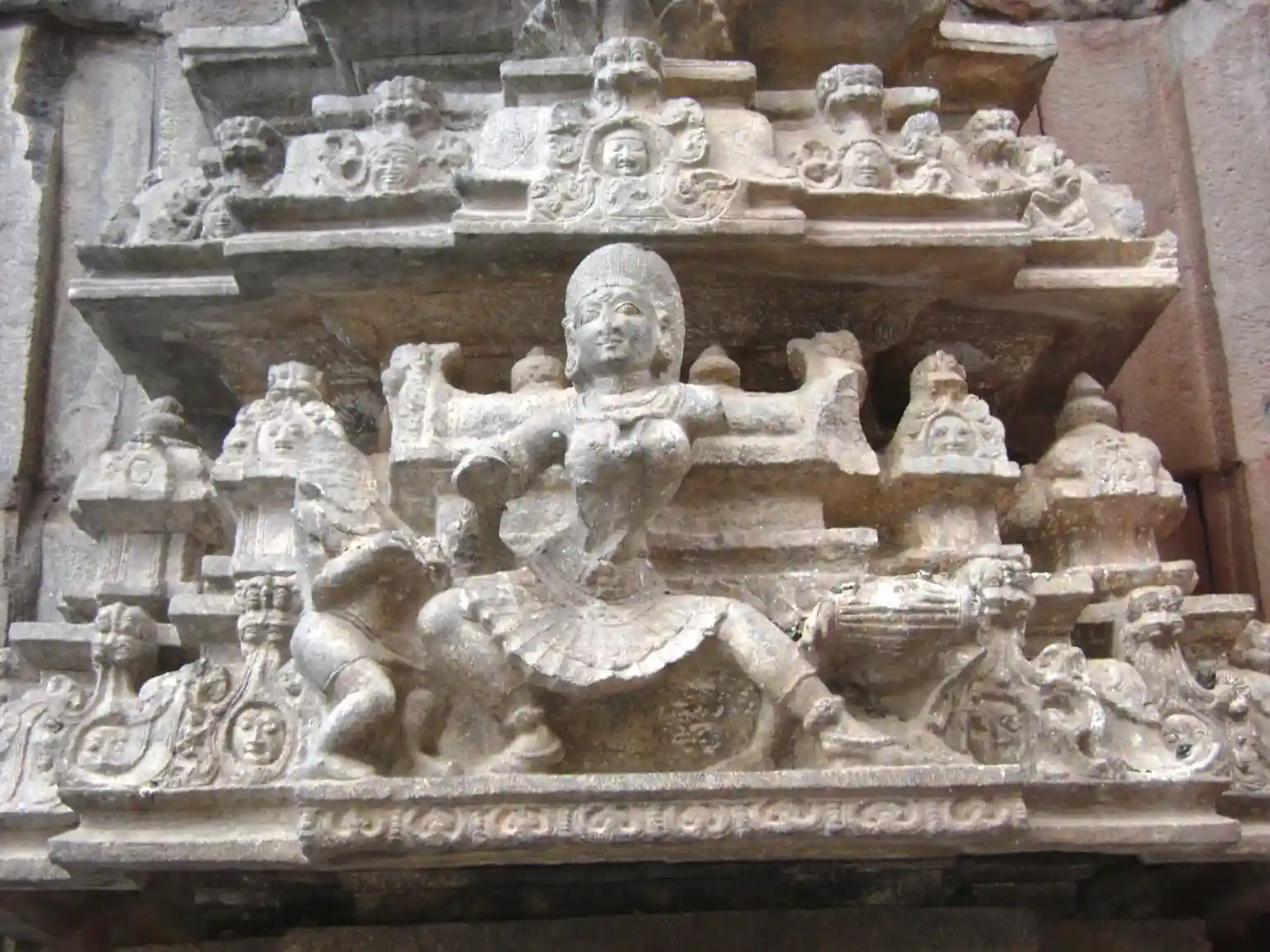
The temple, as a sacred hub, buzzed with activity and energy throughout the day. Its grand architecture, intricate mantapas, deity statues, daily rituals, elaborate decorations, and thematic performances showcased its magnificence. Rituals held a place of great importance within the temple’s functioning. A diverse group of individuals, including caretakers, priests, administrators, musicians, poets, and temple dancers, were dedicated to performing and supporting various ceremonial and spiritual activities.
Damsels are Devadasis and Temple Dancers
Dance was among the most celebrated art forms during the Vijayanagara era, making dancers highly esteemed members of society. Historical research suggests that dancers were primarily divided into two categories: court dancers and temple dancers. These performers were not merely entertainers but highly skilled artists, proficient in all 64 disciplines of the Chatushasti Kalas, showcasing their exceptional talent and versatility.
Although both groups of dancers were respected in society, temple dancers enjoyed the highest status and were granted remarkable privileges. Their exceptional talent earned them a place not only in the sacred temple centers but also within the administrative framework of the Vijayanagara Empire.
The Devadasis, meaning “servants of the deity,” were a special group of dancers selected by the king to perform in temples. These dancers were dedicated to devoting their lives to the deity, serving as an offering of their art and devotion. Their performances and rituals were considered as sacred and significant as the ceremonies conducted by the priests.
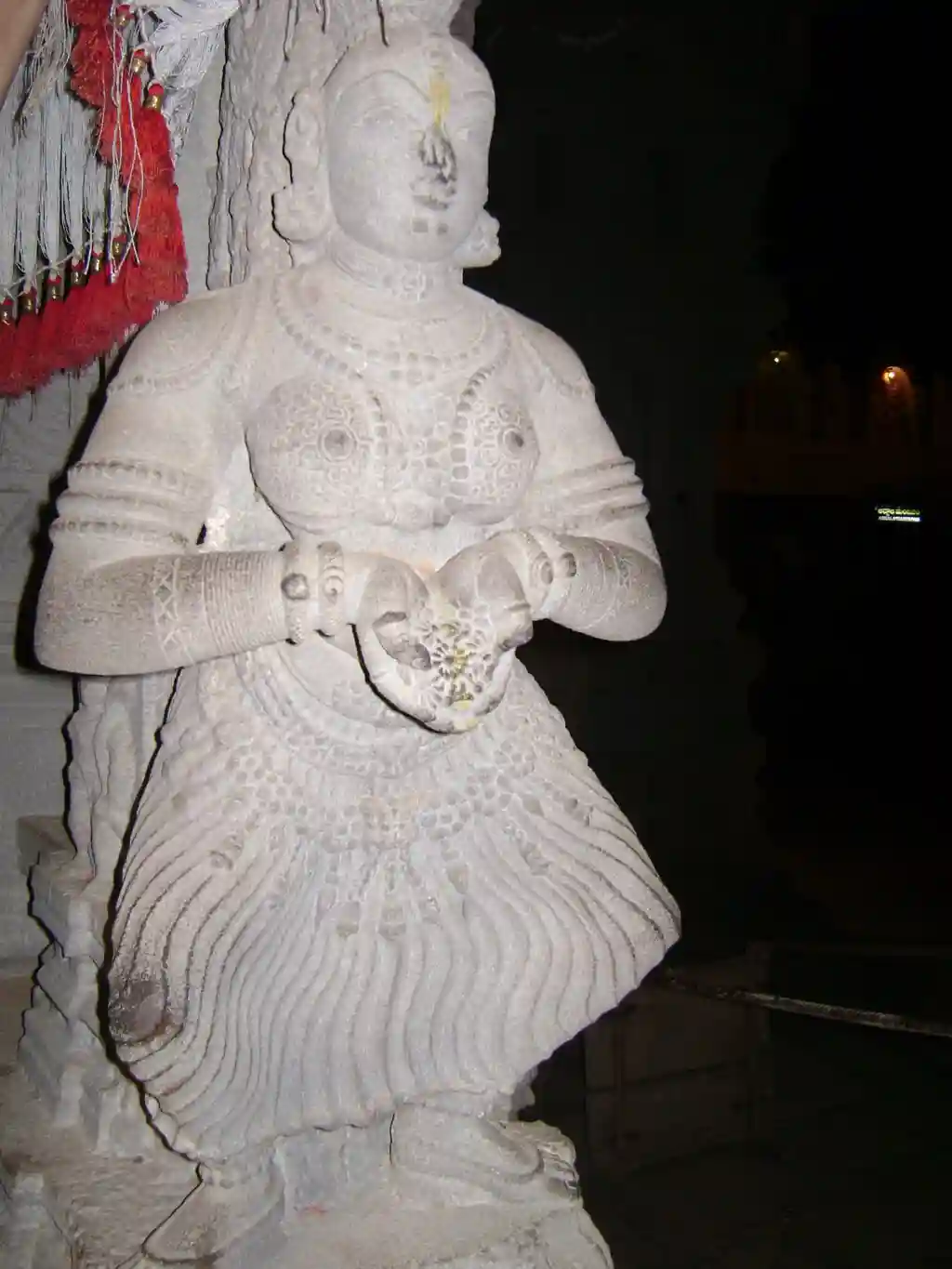
The Devadasi Tradition: Initiation, Role, and Cultural Significance in the Vijayanagara Empire
Devadasis were known by various names, including Sevikas, Dasis, Devarasanis, Gudisanis, Maddelakandru Rangabhogamuvaru, Bhogamuvaru, Paatri, Sani, Sumangali, Devara Basavi, or Basavulu. An inscription from 1518 A.D. in the Veereswara temple in Guntur District mentions two Devadasis, Lingiakki and Yellipedanaagi, chosen to serve Lord Veereswara. These terms likely originated from the specific types of services they rendered to the deity.
Becoming a Devadasi involved a specific initiation process. Before reaching adolescence, a young girl selected for consecration to the temple was introduced into the ceremony. She was provided with a dwelling, called a kudi or padi, as an allowance for her upkeep. The older Devadasis then took her to a Yogakkar, a designated teacher, who was responsible for instructing the girl in the skills and duties of a Devadasi.
On an auspicious day, the girl was taken to the temple, where the priest conducted the Damsels marriage ritual, known as talikettu, with the deity, complete with elaborate ceremonies. The priest would tie the holy thread (Taali) on her behalf, symbolizing her dedication to the gods. Following this, she was granted the necessary resources for her sustenance and officially recognized as a Devadasi. While their primary role was to perform during temple rituals. These dancers also participated in city-wide celebrations, dancing alongside other performers and musicians during major festivals such as Mahanavami and Vasantotsav.
Temple Dancers and Their Hierarchical Roles
The king appointed female dancers to serve the temple by performing music and dance. These dancers had the choice of becoming either courtesans or Devadasis. Within the temple hierarchy, the dancers were assigned roles based on their rank. The principal temple dancer, known as Emperumanadiyar, held the highest position and performed before the main deity. Alongside her, the Tiruvadisani danced during the processions of the god, adding to the grandeur of the ceremonies.
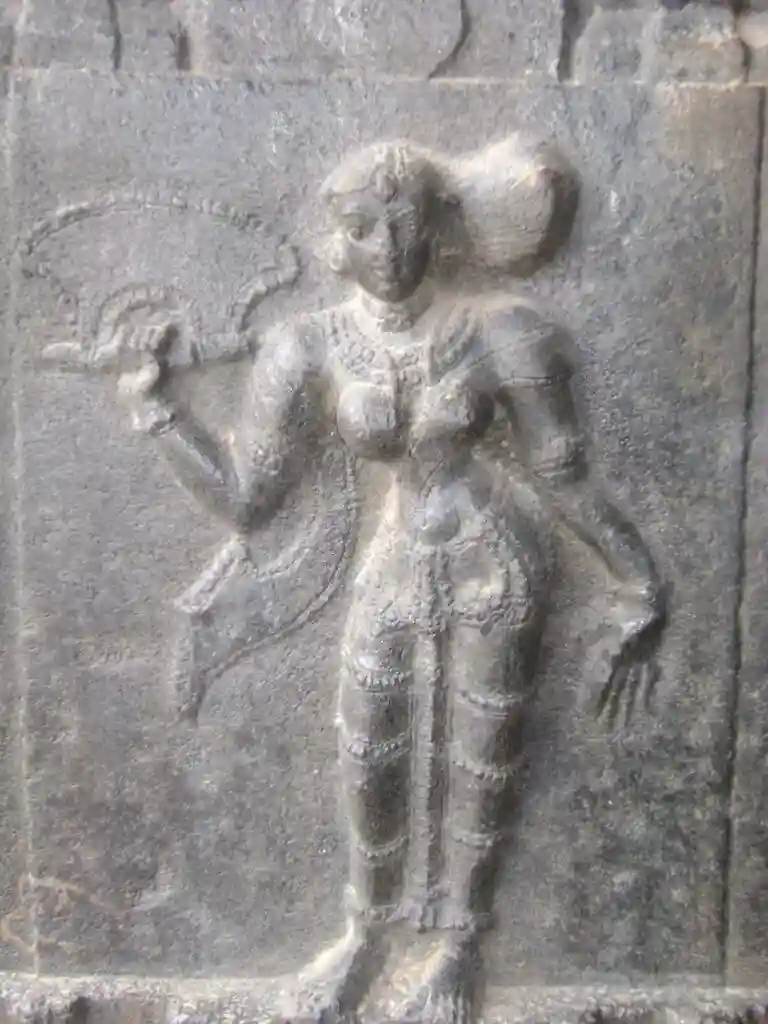
The Nattuvanar was the title of the dancing master who guided the performers. While the various rituals for the lord were being carried out, these dancers and singers contributed their services through performances. Beneath the principal dancers, there were additional dancers who played vital roles in the temple, performing numerous deity-related rites. They served in various capacities, including as processional dancers, singers, musicians, and attendants, each contributing to the temple’s spiritual and ceremonial life.
The temple’s inscriptional records offer details about the appointment of the Emperumanadiyar. According to an inscription from 1531 A.D., Emperor Achyuta Raya selected Muddukuppayi. And Nagasani to serve as the principal temple dancers, or Emperumanadiyars, in the Tirupati temple. These dancers were generously compensated for their services and were granted exclusive rights and privileges within the temple.
The Daily Rituals of Damsels
Though all dancers were considered servants of the temple. Their duties varied depending on their rank within the temple’s service hierarchy. From dawn to dusk, the Devadasis carried out their roles in accordance with the temple’s rituals. They began the day by performing the Suprabhatam morning ritual, where they woke the deity through song and dance. After the Suprabhata Seva, they continued with the Archana, Deepa Seva, and other rites. All of which nourished the main deity. Once the primary ceremonies for the lord were completed. The Devadasis performed in the Natya Mantapa—specially built for such rituals—offering their songs and dances in reverence during the Rangabhogam ceremony.
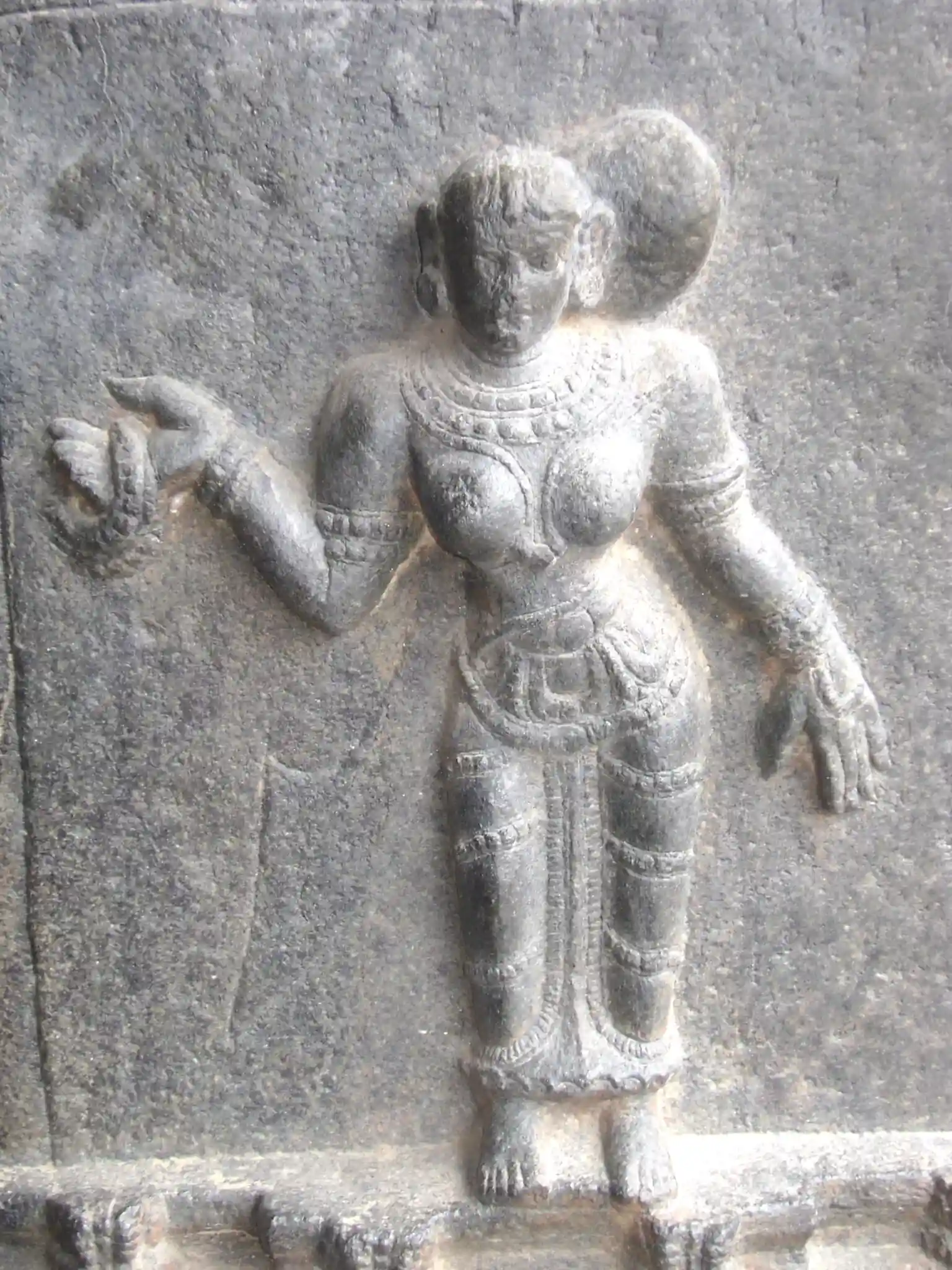
The Socioeconomic Status and Artistic Role of Damsels in Temple Life
The Devadasis enjoyed a high socioeconomic status, admired by kings, officers. And temple officials not only for their artistic skills but also for their dedication to the temple’s growth. As wealthy and respected temple servants, they played a significant role in the temple’s development, making substantial financial contributions. Their donations, which included funding the construction of water tanks, mantapas. And other temple infrastructure, granted them special privileges typically reserved for distinguished members of society.
Temple Damsels played an integral role in every ceremony, festival, and activity held at the temple. In addition to the inscriptional records. The sculptures adorning the walls of Vijayanagara temples provide valuable insight into the lives of these devoted dancers. A common feature in these temples is the depiction of intricately decorated. And costumed female dancers in the inner Mantapas, performing various dance movements and rituals in honor of the deity.
The inner sanctums of the temple, including the Garbhagriha, Rangamantapa, Mahamantapa, and Natyamantapa, feature pillars adorned with carvings of dancers alongside various celestial beings. This suggests that the depicted dancers were likely the Devadasis. Selected to perform the temple’s primary rituals and granted access to the inner temple precincts.
